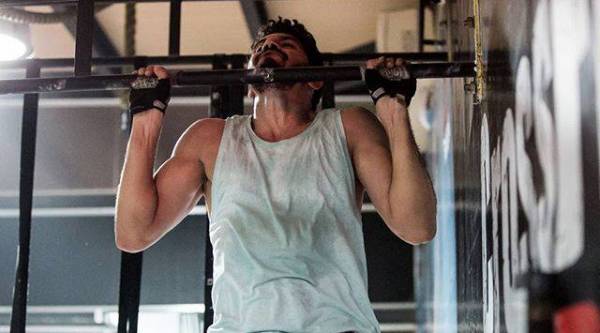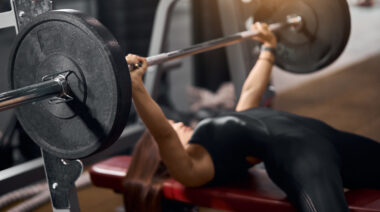How do you approach your warm up? If you’re like most people, you come into the gym, spend a couple of minutes on the rower or the Airdyne, do some dynamic stretching, air squats, push ups, and boom – you’re good to go.
That would be enough of a warm up to tackle more than 90 percent of workouts if you’re a recreational athlete. But imagine if we could increase the quality of your training by 5-10 percent just by improving your warm up. Think about how that would add up after an entire year of training.
The mindset you bring to your warm up has a big impact on everyday performance. If you approach your warm up with a purpose, your training day will reach a completely different level. Structuring a warm up is important for developing this purpose. We can divide that structure into five distinct stages.
Are you warming up your mind along with your body?
Stage 1: Answer Why
The most important phase of the warm up starts in your head. It begins when you open your training journal and review your goals. As humans, if something is not right in front of our eyes, we forget about it. That’s why it’s important to keep our goals in front of us all the time.
Start by reviewing your general goals. This happens by answering one question: Why am I here?
Consider these two scenarios:
Scenario 1: You walk into the gym feeling exhausted and sore. You take the time to sit down and review your goals. You’re here right now because of one thing – you want to win. Having that in front of your eyes brings a completely different energy level and focus to your training. It is the small difference that makes a big difference.
Scenario 2: You walk into the gym feeling exhausted and sore. You put on your trainers, spend a few minutes on the rower, and mindlessly go through your dynamic stretches and mobility in an attempt to feel better. Then you jump right into it.
- Which training session do you think will be more beneficial to you as an athlete?
- Which training session is going to have more focus and intensity?
Stage 2: Answer What
The questions don’t end here, though. After answering the why, it’s important to answer the what. What are you hoping to accomplish in this session? There are usually so many different elements during a training session that it can be difficult to focus. However, if we focus on just one element, it changes the dynamic completely.
So for example, your focus could be, “I want to give 120% in the rowing intervals and walk out leaving nothing in the tank.” Or it might be, “I know I have a technical problem with my clean, and I’m going to focus on keeping the bar close every single time I clean it.”
Answering the what question gives us a small daily goal to work towards. The continual accumulation of these little goals will eventually take us where we want to go. This strategy gives us small victories to celebrate every single day.
Stage 3: Perform a General Warm up
The general warm up separates you from the outside world and tells your mind and body that training has started. It’s the time when you leave everything behind and shift your focus to the why and what. I tell my athletes the general warm up is like flipping a switch. The switch turns off everything else in the outside world and brings your attention to the task at hand.
“If you approach your warm up with a purpose, your training day will reach a completely different level. Structuring a warm up is important for developing this purpose.”
The general warm up is simple in nature. Anything cardio-based will get the job done. A five-minute jog, a 1000m row or even 80-100 cals on the Airdyne will be more than sufficient to break a sweat and get you in a training state.
For some people, the general warm up phase may be same every time, because the habit gets them in that mentally focused state. Others prefer to do something different every time, as they like to have variety in their training. For me, it doesn’t really matter what you do at this point, just as long as it gets the job done.
Stage 4: Stretch and Mobilize
I can’t stress how important this phase is. This phase ensures that we’re going to hit all the right positions within our movements. For example, if you’re overhead squatting today and your shoulders and lats are tight, good luck keeping that bar in the right position.
The problem I usually see here is that people don’t spend enough time mobilizing a particular area. An athlete walks in the gym, grabs a band, spends twenty seconds in a single position, and boom – they think that they’ve mobilized that joint or area for the day. Well, I’ve got some bad news for you. You didn’t mobilize anything, and you just wasted a good twenty seconds of your life.
If you haven’t read Becoming A Supple Leopard by Kelly Starrett, I encourage you to. In the programming section, Kelly mentions you need to spend at least two minutes in a position for there to be any positive effect whatsoever.
For this phase of the warm up, mobilize anything that’s tight or necessary to perform a task for the day. You don’t want to spend sixty minutes doing general mobility work before a training session. Save that for afterwards.

If pull ups are your weak point, adding them into your warm up routine will improve them significantly.
Stage 5: Work on a Specific Warm Up
The specific warm up is where the magic happens. For most people, the specific stage of the warm up is where you do the exercises to warm up for whatever task comes next, and that is absolutely correct. But the specific warm up stage has a lot more potential. Dan John says “If it’s important, do it every day.” I’ve found the specific warm up stage is great for working on weaknesses while the body is still fresh.
For example: Imagine pull ups are a serious weakness for you. So you decide to put a small 1-6 pull up ladder in your warm up every single training day for the next six weeks. That’s 21 pull ups a day, five days a week, for six weeks. That comes to 630 pull ups by the end of the six weeks, and that’s just during the warm up. Do you think your pull ups will improve? Hell yes.
I’ve tried this countless times with my athletes and it works, no matter what the exercise or the weakness. If you do something over and over again, you will get better. And the best part is that you won’t even feel like it’s a lot of work because it only adds a couple of extra minutes to your warm up.
How to Develop a Warm Up Habit
The warm up is an important stage of your training that should not be taken lightly. Approaching the warm up with a purpose is a habit anyone can develop, but it will take time and dedication.
Here’s my recommendation. Implement stage one for the next week. Make sure you do it every day and never miss a day. Observe what this does for your training. Take a note of how you’re feeling and record it in your journal.
On week two, add stage two so that you are performing both stage one and stage two each day. Continue this pattern by adding a warm up stage each week onto your daily structure. By the end of five weeks, you will have implemented all five stages. Stick with all five stages for another two weeks, so that they become a sequence you perform automatically each time you set foot in the gym.
Breaking any task into small, manageable pieces makes accomplishing it simpler and easier. Beyond that, it all comes down to how determined you are to achieve your goal.






